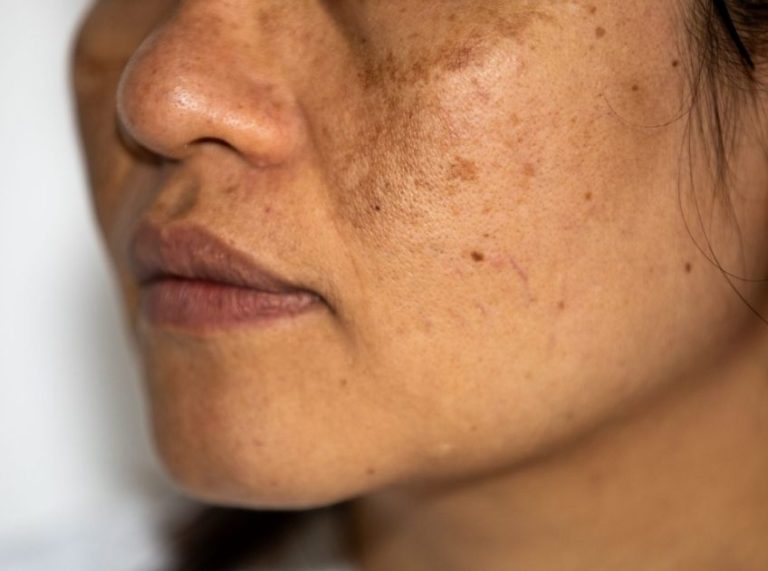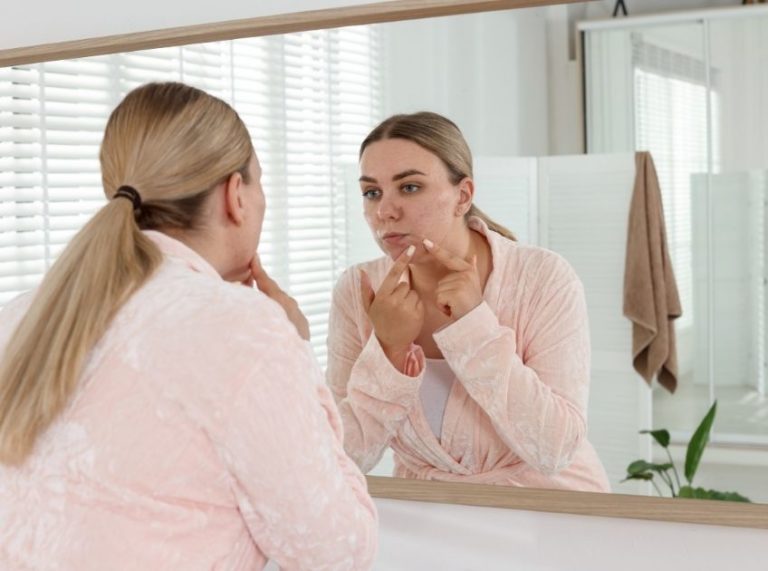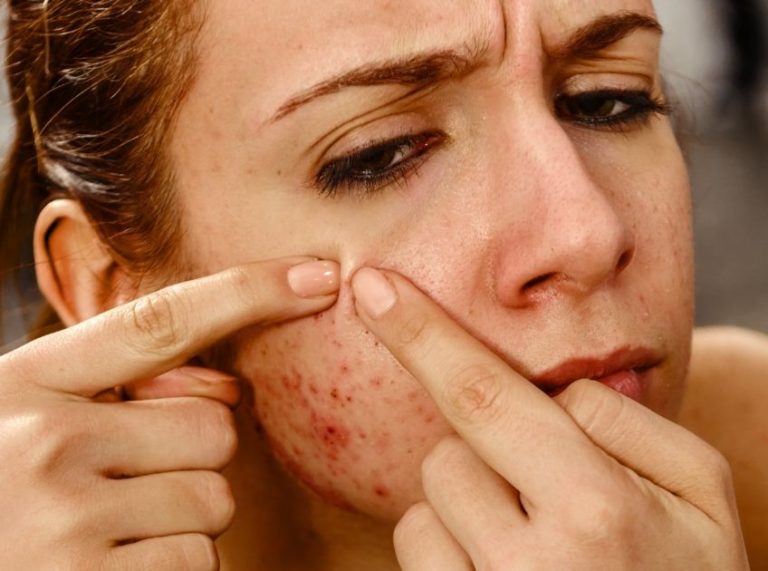
Important: This article is for informational purposes only. Please read our full disclaimer for more details.
Vaseline has long held a spot in medicine cabinets and makeup bags, but is it a secret weapon for facial skincare? From sealing in moisture to soothing irritation, this humble petroleum jelly has built quite a fan base. But like any product, it comes with both benefits and limits.
This guide breaks down what Vaseline does for your skin, backed by science, and whether it’s suitable for your skin type and concerns.
What Is Vaseline?
Vaseline is a brand name for petroleum jelly, a semi-solid mixture derived from petroleum. It’s considered an occlusive agent, meaning it forms a physical barrier on the skin to lock in moisture. Unlike moisturizers that add hydration, Vaseline prevents water loss from the skin surface.
Petroleum jelly (1) is non-comedogenic, hypoallergenic, and widely used in wound healing, lip care, and post-procedure recovery (like after laser treatments or tattoos).
What Does Vaseline Do for Skin?
Vaseline doesn’t hydrate the skin by itself—it traps existing moisture, helping the skin barrier retain water. According to a study published in Skin Pharmacology and Physiology, petroleum jelly reduces transepidermal water loss (TEWL) by up to 98%, making it one of the most effective barrier-repair agents available (2).
It’s also used as a protective layer for minor cuts, chafing, or windburn due to its water-repellent and air-sealing properties.
Top Benefits of Using Vaseline on Your Face
Using Vaseline on your face, when done correctly, offers several skin benefits:
- Seals in hydration: Great for finishing your skincare routine, especially over a humectant like hyaluronic acid.
- Softens rough patches: Works well on flaky or peeling areas around the nose, chin, or cheeks.
- Speeds healing: Helps in the healing of cracked or irritated skin by preventing exposure to air and bacteria.
- Post-treatment care: Often recommended by dermatologists after laser, chemical peel, or micro-needling treatments.
Can Vaseline Help With Skin Conditions Like Eczema or Psoriasis?
Yes, to an extent. Vaseline is highly recommended for eczema-prone and psoriatic skin due to its ability to reinforce the skin barrier (3).
For people with rosacea, dermatitis, or chronic dryness, Vaseline may help reduce inflammation when used over gentle moisturizers (4).
Is Vaseline a Good Fix for Dry Facial Skin?
Absolutely. For very dry skin, Vaseline can act as a final sealing step to prevent overnight moisture loss. Apply it over a water-based moisturizer before bed—this technique, often called slugging, helps you wake up with soft, plump skin.
- Works best in the winter months
- Ideal for cheeks, under eyes, and around the mouth
- It can help heal dry patches from over-exfoliation or retinol use
Will Vaseline Make Oily or Acne-Prone Skin Worse?
Not necessarily. Though Vaseline is greasy, it’s non-comedogenic—meaning it doesn’t clog pores. However, it can trap other substances (like dirt, sweat, or bacteria) beneath it, which can cause breakouts if your skin isn’t properly cleansed.
- Avoid using Vaseline over active breakouts.
- Best used sparingly on oily skin types
- Consider patch-testing before using on acne-prone areas
Is It Safe for Sensitive Skin Types?
Yes—Vaseline is often one of the few products tolerated by those with ultra-sensitive or allergic skin. It’s fragrance-free, dye-free, and doesn’t contain common irritants. Many dermatologists recommend it for conditions like:
- Perioral dermatitis
- Rosacea
- Allergic contact dermatitis
Just be sure to apply it to clean, product-free skin to prevent irritation from trapped residue.
The Drawbacks: When You Might Want to Skip It
While Vaseline has many upsides, there are scenarios where it may not be the best option:
- Can trap bacteria: If used on unclean skin, it may seal in acne-causing bacteria.
- Greasy residue: It doesn’t absorb, so it can feel sticky or transfer to pillows and clothes.
- Not a standalone moisturizer: Vaseline doesn’t add moisture, so it should be paired with a hydrating product underneath.
Science-Backed Insights You Should Know
- A 2005 study in The Journal of Investigative Dermatology confirmed that Vaseline strengthens the skin barrier and can mimic the lipid structure of healthy skin (5).
- It’s one of the least irritating ingredients used in dermatology and is even recommended for post-surgical wound care (6).
- Dermatologists suggest applying it as the last step in your nighttime skincare to boost hydration retention and support skin repair (7).
Frequently Asked Questions (FAQ’S)
Q1: Can Vaseline reduce wrinkles or fine lines?
A. While Vaseline doesn’t have anti-aging ingredients, it can plump the skin temporarily by sealing in moisture, making fine lines appear softer.
Q2: Is it safe to use Vaseline around the eyes?
A. Yes, in small amounts. It can be used to soften crow’s feet or under-eye dryness. Use a clean finger and apply sparingly.
Q3: Can I wear Vaseline under makeup?
A. It’s not ideal as a base—it can break down makeup and cause sliding. Instead, use it at night for skin prep and barrier repair.
Final Verdict: Vaseline—A Skin Saver with Boundaries
Vaseline can be a skin-saving staple when used correctly, especially for dry, sensitive, or compromised skin barriers. It’s backed by decades of dermatological use and scientific research. However, it’s not a cure-all. It won’t add moisture or treat acne, and it needs to be paired with proper cleansing and hydrating products for best results.

















